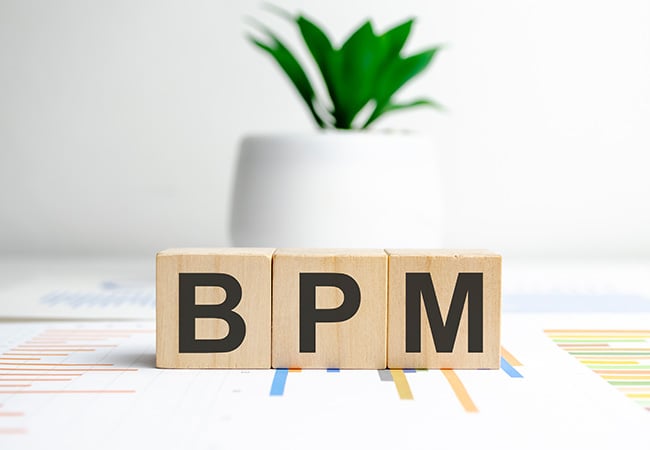What does business process optimisation have to do with CX?
Customer experience management is about balancing the fluffy stuff with optimal operations. Focusing on delighting your customers means that customer...

It is inarguable that customer experience and listening to the Voice of the Customer is essential. Customers are more likely to rebuy and remain loyal if the experience they have with your organisation is positive and creates a sense of satisfaction. There are numerous ways to measure and metricise Customer Experience, but often it is difficult to choose between them, or even figure out if your organisation needs them.
Often as senior management within an organisation, we have a helicopter view of day-to-day operations, and may have never walked a day in our customer's shoes, and may not understand our customer's experiences from a first-hand point-of-view.
To better understand your Customer Experience, walk a mile in their shoes.
A starting point to get a feel for how customer experience is playing out within your business is to take the time out to be a customer. Such an exercise can be particularly enlightening for brand and product owners, since there may well be a gap between organisational initiatives and front-line action. If you want to test what your customers experience, here are some sneaky (and not so sneaky) ways of living your brand like a customer.
1. Ghost call your contact centre
 Your contact centre is often the most significant customer interaction point in your business. More often than not, it is also the place where customers go when they either have a problem or actively need to use your product or service.
Your contact centre is often the most significant customer interaction point in your business. More often than not, it is also the place where customers go when they either have a problem or actively need to use your product or service.
A simple way to test the professionalism and knowledge of your contact centre agents is to put in a call with a question regarding your offering.
Pay attention to the entire experience, from how long it took for your call to be answered, to how helpful the agent was. A similar test can be conducted via your online chat service, in-store or by emailing the contact-us address on your website.
Key questions to ask yourself:
2. Bring up your brand at the next party you attend
 Sometimes the best insight you can get about how your customers are treated is to ask your friends their honest opinion.
Sometimes the best insight you can get about how your customers are treated is to ask your friends their honest opinion.
There is nothing more illuminating than an impassioned debate between friends over the pros and cons of a particular brand. Such conversations may leave you cringing or bursting with pride in equal measure.
Either way, you will gain invaluable insight into your customer experience in a frank manner that you are unlikely to gather through any other resource.
Key questions to ask yourself:
3. Google your brand
 This one may sound obvious. By Googling your brand, you will find reviews and comments on any number of sites. The same advice applies when conducting social media searches. While conversations with friends and customers are constructive, you are likely to uncover the very nastiest opinions of your brand online.
This one may sound obvious. By Googling your brand, you will find reviews and comments on any number of sites. The same advice applies when conducting social media searches. While conversations with friends and customers are constructive, you are likely to uncover the very nastiest opinions of your brand online.
More than that, you should also be able to get a sense of whether or not your organisation is managing to catch and respond to online complaints or comments posted publicly.
Key questions to ask yourself:
4.Follow your customer journey requesting no special treatment (or ask someone to do it for you)
 This is a slightly more complicated way to test customer experience than the above three. There is often an intrinsic bias to excellent customer service when the customer journey is walked by someone senior in the organisation. If you can remain anonymous, however, experiencing each step and process for yourself will help you understand your customer journey from the perspective of both the customer and your employees.
This is a slightly more complicated way to test customer experience than the above three. There is often an intrinsic bias to excellent customer service when the customer journey is walked by someone senior in the organisation. If you can remain anonymous, however, experiencing each step and process for yourself will help you understand your customer journey from the perspective of both the customer and your employees.
If you cannot remain anonymous, it may also be helpful to ask a trusted friend or family member to walk the journey for you.
Key questions to ask yourself:
5. Talk to your customers
 Getting feedback from the proverbial horse's mouth is where one really starts to understand the customer experience. Getting this feedback can be as simple as picking up the phone and chatting to a small sample of customers. Engaging in regular conversation with your customers will provide insight into a plethora of topics, from the utility of your product to the value of your customer experience.
Getting feedback from the proverbial horse's mouth is where one really starts to understand the customer experience. Getting this feedback can be as simple as picking up the phone and chatting to a small sample of customers. Engaging in regular conversation with your customers will provide insight into a plethora of topics, from the utility of your product to the value of your customer experience.
These conversations are likely to give you the most unambiguous indication of whether or not your organisation requires a more formal Voice of the Customer programme.
Key questions to ask yourself:
Exploring a Customer Experience or Voice of the Customer programme can be daunting, and may even feel like an unnecessary expenditure in tough economic times. By trying out a few of the above methods of testing customer experience, you should be able to begin to build a view of how customers are really treated within your organisations.
Poor customer experience can be the underlying cause of everything from churn to eroding brand reputation.
If, by following the above suggestions, you do happen to have a experience you do not like, perhaps its time to consider a more formal approach towards VOC in your business.

Customer experience management is about balancing the fluffy stuff with optimal operations. Focusing on delighting your customers means that customer...

It doesn’t matter which industry you’re in, if you have customers you need to provide a great customer experience. And make sure it’s what...

A brand promise is so much more than just business goals or a list of value propositions, it’s a fundamental declaration of what customers can...